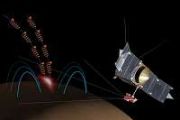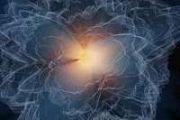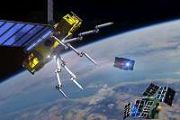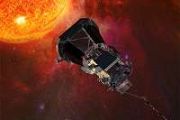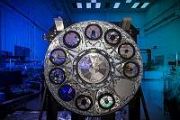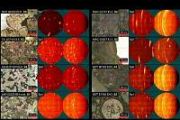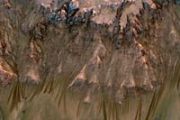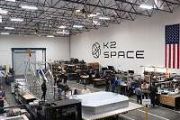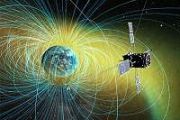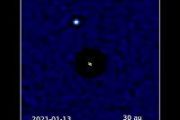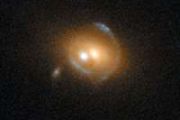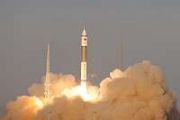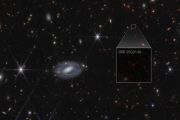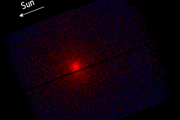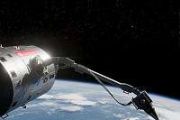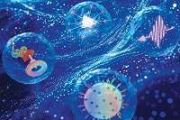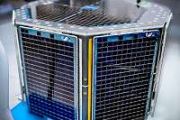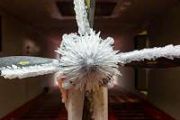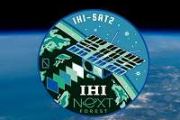
Copernical Team
Detection of phosphine in a brown dwarf atmosphere raises more questions
 Phosphorus is one of six key elements necessary for life on Earth. When combined with hydrogen, phosphorus forms the molecule phosphine (PH3), an explosive, highly toxic gas. Found in the atmospheres of the gas giant planets Jupiter and Saturn, phosphine has long been recognized as a possible biosignature for anaerobic life, as there are few natural sources of this gas in the atmospheres of terr
Phosphorus is one of six key elements necessary for life on Earth. When combined with hydrogen, phosphorus forms the molecule phosphine (PH3), an explosive, highly toxic gas. Found in the atmospheres of the gas giant planets Jupiter and Saturn, phosphine has long been recognized as a possible biosignature for anaerobic life, as there are few natural sources of this gas in the atmospheres of terr Young rogue planet displays record-breaking 'growth spurt'
 A young rogue planet about 620 light-years away from Earth has experienced a record-breaking "growth spurt," hoovering up some six billion tons of gas and dust each second over a couple of months.
A team of international researchers have explored changes in the planet's growth and immediate surroundings. The observations provide insight into how rogue planets - free-floating planetary-mass
A young rogue planet about 620 light-years away from Earth has experienced a record-breaking "growth spurt," hoovering up some six billion tons of gas and dust each second over a couple of months.
A team of international researchers have explored changes in the planet's growth and immediate surroundings. The observations provide insight into how rogue planets - free-floating planetary-mass Most powerful cosmic radio ring yet found by citizen scientists
 The most distant and powerful odd radio circle (ORC) ever detected has been discovered by astronomers working with citizen scientists.
ORCs are giant, faint rings of radio emission surrounding galaxies, visible only in radio wavelengths and composed of relativistic, magnetised plasma. First identified in 2019, only a few confirmed examples exist, most spanning 10-20 times the diameter of t
The most distant and powerful odd radio circle (ORC) ever detected has been discovered by astronomers working with citizen scientists.
ORCs are giant, faint rings of radio emission surrounding galaxies, visible only in radio wavelengths and composed of relativistic, magnetised plasma. First identified in 2019, only a few confirmed examples exist, most spanning 10-20 times the diameter of t Rogue planet devours matter at record pace of six billion tonnes a second
 Astronomers using the European Southern Observatory's Very Large Telescope (ESO's VLT) have witnessed an extraordinary growth spurt in a free-floating planet, observing it accumulate mass at a rate of six billion tonnes per second - the fastest accretion ever recorded for a rogue planet or any planet to date.
Rogue planets drift through space untethered to any star. The newly studied objec
Astronomers using the European Southern Observatory's Very Large Telescope (ESO's VLT) have witnessed an extraordinary growth spurt in a free-floating planet, observing it accumulate mass at a rate of six billion tonnes per second - the fastest accretion ever recorded for a rogue planet or any planet to date.
Rogue planets drift through space untethered to any star. The newly studied objec New tabletop detector to capture gravitational waves in the milli-Hz range
 Scientists have proposed a groundbreaking method to detect gravitational waves in the milli-Hertz frequency range, unlocking a new observational window into the universe. This advance could allow researchers to study astrophysical and cosmological events invisible to existing detectors.
Gravitational waves - minute ripples in spacetime first predicted by Einstein - have so far been observe
Scientists have proposed a groundbreaking method to detect gravitational waves in the milli-Hertz frequency range, unlocking a new observational window into the universe. This advance could allow researchers to study astrophysical and cosmological events invisible to existing detectors.
Gravitational waves - minute ripples in spacetime first predicted by Einstein - have so far been observe Vantor and Lanteris mark new era for space intelligence and defense technology
 Vantor and Lanteris Space Systems - formerly Maxar Intelligence and Maxar Space Systems, respectively - have each launched bold new identities, marking the completion of a historic transformation for the companies once united under Maxar Technologies. The dual rebrands reflect the group's strategic evolution into two complementary entities driving innovation across spatial intelligence, defense
Vantor and Lanteris Space Systems - formerly Maxar Intelligence and Maxar Space Systems, respectively - have each launched bold new identities, marking the completion of a historic transformation for the companies once united under Maxar Technologies. The dual rebrands reflect the group's strategic evolution into two complementary entities driving innovation across spatial intelligence, defense Curtin powers global push to find life on Mars and advance autonomy
 Curtin University is helping unlock the secrets of life on Mars and advance next-generation robotics and autonomous systems, with two new international agreements signed this week at the International Astronautical Congress in Sydney.
Curtin signed a Statement of Strategic Intent to formalise the LifeSpringsMars Working Group, and a Memorandum of Understanding (MoU) with India-based techno
Curtin University is helping unlock the secrets of life on Mars and advance next-generation robotics and autonomous systems, with two new international agreements signed this week at the International Astronautical Congress in Sydney.
Curtin signed a Statement of Strategic Intent to formalise the LifeSpringsMars Working Group, and a Memorandum of Understanding (MoU) with India-based techno Patchwork planets: Piecing together the early solar system
 Our solar system is a smashing success.... A new study suggests that from its earliest period - even before the last of its nebular gas had been consumed - Earth's solar system and its planets looked more like a bin of well-used LEGO blocks than slowly-evolving spheres of untouched elements and minerals.
"Far from being made of pristine material, planets - including Earth - were built from
Our solar system is a smashing success.... A new study suggests that from its earliest period - even before the last of its nebular gas had been consumed - Earth's solar system and its planets looked more like a bin of well-used LEGO blocks than slowly-evolving spheres of untouched elements and minerals.
"Far from being made of pristine material, planets - including Earth - were built from Eutelsat and Tusass Strengthen Greenland's Digital Backbone with LEO Connectivity Expansion
 Eutelsat and Tusass, Greenland's national telecommunications provider, have expanded their strategic partnership through a new multi-year agreement to deliver low Earth orbit (LEO) satellite connectivity across Greenland. The collaboration will use Eutelsat's OneWeb network to enhance secure, resilient, and high-speed communications across the Arctic nation's remote regions.
The extended p
Eutelsat and Tusass, Greenland's national telecommunications provider, have expanded their strategic partnership through a new multi-year agreement to deliver low Earth orbit (LEO) satellite connectivity across Greenland. The collaboration will use Eutelsat's OneWeb network to enhance secure, resilient, and high-speed communications across the Arctic nation's remote regions.
The extended p SpaceX plans 11th test of Starship later this month from South Texas
 SpaceX is planning the 11th flight test of Starship, the most powerful rocket ever developed, as early as Oct. 13 from South Texas.
The private company, which is developing the fully reusable transportation system, said the launch window will open in 10 days at 6:15 p.m. CDT but said "the schedule is dynamic and likely to change." A webcast will begin 30 minutes before the window opens.
SpaceX is planning the 11th flight test of Starship, the most powerful rocket ever developed, as early as Oct. 13 from South Texas.
The private company, which is developing the fully reusable transportation system, said the launch window will open in 10 days at 6:15 p.m. CDT but said "the schedule is dynamic and likely to change." A webcast will begin 30 minutes before the window opens. 


